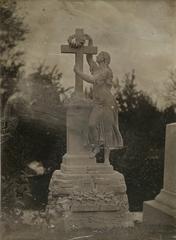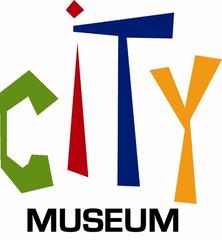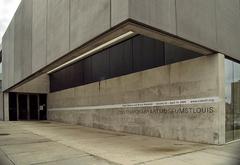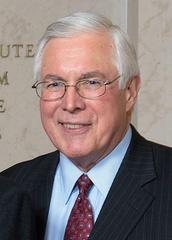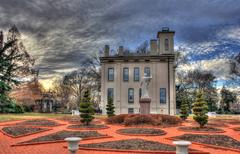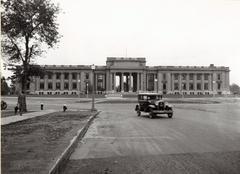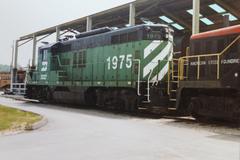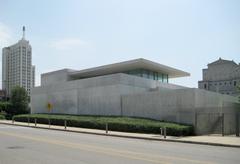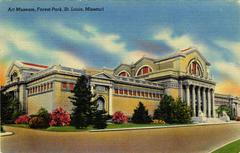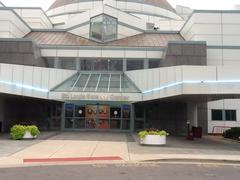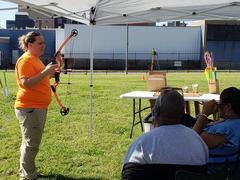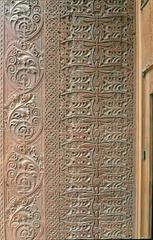
Soldiers Memorial St. Louis: Visiting Hours, Tickets, and Historical Sites Guide
Date: 04/07/2025
Introduction
The Soldiers Memorial Military Museum in St. Louis is a powerful tribute to Missouri’s veterans, blending historic architecture, immersive exhibitions, and civic engagement. Established after World War I and dedicated by President Franklin D. Roosevelt in 1936, the museum honors the sacrifices of St. Louisans across generations, from the Revolutionary War to current military operations. In this comprehensive guide, you’ll find detailed information on visiting hours, ticketing, exhibits, accessibility, and tips for planning a memorable visit to one of St. Louis’s premier historical sites (DTLS Studio; Mackey Mitchell Architects; Missouri Historical Society).
Table of Contents
- Origins and Historical Context
- Architectural Design and Symbolism
- Renovation and Preservation Efforts
- Interior Features and Collections
- Visitor Information and Tips
- Exhibits and Highlights
- Events and Community Engagement
- Accessibility and Inclusivity
- Nearby Attractions and Travel Tips
- Frequently Asked Questions (FAQ)
- Conclusion and Call to Action
- References
Origins and Historical Context
Soldiers Memorial was conceived in the aftermath of World War I, reflecting St. Louis’s significant contributions to the war effort. The memorial was dedicated by President Franklin D. Roosevelt in 1936 and officially opened in 1938 (DTLS Studio). Over time, its scope expanded to honor veterans of World War II, the Korean War, the Vietnam War, and more recent conflicts, serving as both a museum and a place of remembrance (Mackey Mitchell Architects).
Architectural Design and Symbolism
Art Deco and Traditional Elements
The museum is an outstanding example of Art Deco architecture, designed by Mauran, Russell & Crowell. Its symmetrical limestone and granite façade, geometric ornamentation, and monumental sculptures by Walker Hancock embody permanence and honor (Mackey Mitchell Architects).
Key Features
- Monumental Sculptures: Four groups, each symbolizing Loyalty, Vision, Courage, and Sacrifice.
- Gold Star Mosaic and Cenotaph: A six-pointed gold star mosaic in the loggia ceiling marks the ultimate sacrifice, while the cenotaph below lists names of fallen St. Louis soldiers, including nurse Edith Ferguson (Explore St. Louis).
- Court of Honor: Across Chestnut Street, engraved stone walls and a reflecting pool memorialize those lost in World War II, Korea, and Vietnam (Mackey Mitchell Architects).
Renovation and Preservation Efforts
A transformative $30 million renovation completed in 2018 revitalized the memorial. Restoration projects included the Art Deco façade, Gold Star mosaic, and expansion of exhibition space. The renovation also prioritized accessibility, earning the 2019 Barrier-Free America Award and LEED Gold certification (Mackey Mitchell Architects; DTLS Studio). Modern systems were integrated seamlessly with historic elements, ensuring the museum’s relevance for future generations.
Interior Features and Collections
Museum Layout
- Central Breezeway: Houses the black granite cenotaph engraved with the names of World War I fallen (aboutstlouis.com).
- East and West Wings: Feature permanent and rotating exhibits spanning American military history.
- Main Exhibit Hall: Chronological displays with interactive touchscreens and personal narratives.
- Memorial Courtyard: Outdoor space for reflection and ceremonies.
Collections
The museum’s galleries present over 300 artifacts, including:
- Uniforms, medals, and personal items from local soldiers
- General John J. Pershing’s portrait
- Wheel and bell from USS St. Louis
- Tuskegee Airman Wendell Pruitt’s uniform
- Medals of Honor and other significant memorabilia
- Carrier pigeon capsule, German gas mask, and early x-ray device (Missouri Over There)
Interactive kiosks, oral histories, and digital displays enhance the educational experience (Explore St. Louis).
Visitor Information and Tips
- Location: 1315 Chestnut Street, Downtown St. Louis, MO 63103
- Visiting Hours: Wednesday–Sunday, 10:00 a.m. to 5:00 p.m.; closed Mondays, Tuesdays, Thanksgiving Day, and Christmas Day (aboutstlouis.com)
- Admission: Free for all visitors. Some special exhibitions or guided tours may require a nominal fee (whichmuseum.com)
- Parking: Street parking is limited; several paid garages are nearby. Check for downtown event schedules that may affect availability (explorestlouis.com)
- Public Transit: MetroLink and MetroBus serve the area, with stops close to the museum.
Pro Tip: Plan your visit using the Missouri Historical Society website for current exhibitions and event updates.
Exhibits and Highlights
Permanent Exhibits
- World War I & II Artifacts: Uniforms, weapons, and personal stories connect visitors to local and national history (touristsecrets.com).
- Emerson Gun Turret: A centerpiece symbolizing WWII technological innovation (St. Louis Magazine).
- Medal of Honor Recipients: Dedicated displays honor local heroes.
Rotating and Special Exhibitions
- “St. Louis in Service”: Highlights the local impact of American military history, featuring artifacts and stories from the Revolutionary War to present (St. Louis Magazine).
- “Ghost Army: The Combat Con Artists of World War II”: Through January 12, 2025, this exhibit explores the 23rd Headquarters Special Troops’ creative deception tactics, with original artifacts and interactive displays (St. Louis Jewish Light; moprocommunicators.org).
- Court of Honor: Outdoor memorials commemorate local lives lost in WWII, Korea, and Vietnam (Visit Missouri).
Community-Focused Events
The museum regularly hosts events such as the “Taste of Black St. Louis” festival and the anniversary of the Srebrenica Genocide, fostering inclusivity and dialogue (St. Louis Calendar; Never Forget Srebrenica).
Events and Community Engagement
Annual ceremonies on Memorial Day, Veterans Day, and other commemorative dates draw visitors for reflection, music, and wreath-laying services (St. Louis Magazine). The Missouri Historical Society coordinates guided tours, educational programs, and lectures for groups and schools, making the memorial a vibrant hub for civic life.
Accessibility and Inclusivity
- Full Accessibility: Ramps, elevators, and accessible restrooms are available.
- Service Animals: Permitted under ADA guidelines.
- Interpretive Materials: Clear signage and interactive options support visitors with sensory needs.
- Inclusivity: Exhibits highlight the diverse backgrounds of service members, including women and people of color.
Nearby Attractions and Travel Tips
Soldiers Memorial’s downtown location allows easy exploration of:
- Gateway Arch National Park
- Citygarden Urban Sculpture Park
- Old Courthouse
- St. Louis Central Library
- Stifel Theatre
Comfortable walking shoes are recommended, and the area is well-served by public transit. Local restaurants, coffee shops, and food trucks offer nearby dining options (explorestlouis.com).
Frequently Asked Questions (FAQ)
Q: What are the museum’s visiting hours?
A: Wednesday–Sunday, 10:00 a.m.–5:00 p.m. Closed Mondays, Tuesdays, Thanksgiving, and Christmas.
Q: Is there an admission fee or are tickets required?
A: Admission is free; special exhibitions or guided tours may charge a small fee.
Q: Is the museum accessible for visitors with disabilities?
A: Yes, with ramps, elevators, and accessible restrooms.
Q: Where can I park?
A: Limited street parking; several public garages nearby.
Q: Are guided tours available?
A: Yes, by appointment; check the Missouri Historical Society website.
Q: Can I take photos inside the museum?
A: Non-flash photography is permitted in most areas; restrictions may apply for special exhibits.
Conclusion and Call to Action
The Soldiers Memorial Military Museum is a cornerstone of St. Louis’s cultural heritage, inviting visitors to honor the service and sacrifice of Missouri’s military heroes. With its blend of evocative exhibits, accessible amenities, and vibrant community programming, it offers an enriching experience for all. Plan your visit by checking the latest hours and events, explore the interactive displays, and take time to reflect in this beautiful civic space.
Download the Audiala app for curated tours, interactive maps, and the latest event updates. Follow the Missouri Historical Society on social media for ongoing news and exclusive content. Engage with St. Louis’s military heritage—your journey through history begins here.
References
- Soldiers’ Memorial and Court of Honor – DTLS Studio
- Soldiers Memorial Military Museum – Mackey Mitchell Architects
- Celebrate the Grand Reopening of Soldiers Memorial in St. Louis – Explore St. Louis
- Ghost Army WWII Exhibit Opening in St. Louis – St. Louis Jewish Light
- Soldiers Memorial Military Museum Visiting Hours and Exhibits – St. Louis Magazine
- Soldiers Memorial Military Museum – Missouri Historical Society
- AboutStLouis.com – Soldiers Memorial Military Museum
- TouristSecrets.com – Uncover History at St. Louis Soldiers Memorial Museum
- Visit Missouri – Soldiers Memorial Military Museum
- St. Louis Calendar – Events at Soldiers Memorial
- Never Forget Srebrenica
- Whichmuseum.com – Soldiers Memorial Military Museum
- UrbanReviewSTL.com – St. Louis Soldiers Memorial Military Museum
- Moprocommunicators.org – MPC Members to Visit Soldiers Memorial
- Travmedia.com – St. Louis Soldiers Memorial
- Missouri Over There – Soldiers Memorial Military Museum

